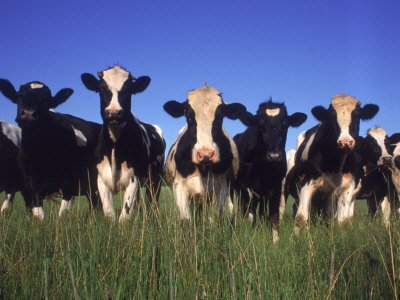 A long period of low milk prices will likely accelerate dairy-farm consolidation in Pennsylvania, according to an industry expert in Penn State's College of Agricultural Sciences.
A long period of low milk prices will likely accelerate dairy-farm consolidation in Pennsylvania, according to an industry expert in Penn State's College of Agricultural Sciences.Chad Dechow, associate professor of dairy cattle genetics, sees the United States dairy industry migrating more toward the hog industry model. A sizable contingent of small farms that can produce milk cheaply, rely on nonfarm income sources, or incorporate a niche market will remain. The majority of milk, however, will be produced by a limited number of very large operations with several thousand or more cows spread across "satellite dairies."
"We are likely to see fewer single-site, large-family dairies," he said. "Much of this consolidation in Pennsylvania will come from large family dairy farms that continue to grow and some operators may come from Western dairies that purchase satellite dairies farther east."
"Unfortunately, some 1,000-cow operations that would have been considered sizable just a short time ago have gone bankrupt due to low farm milk prices," Dechow added. "Extremely large Western dairies have purchased many of those farms in the West to run as satellite locations and are poised to push eastward."
Current dairy-industry expansion is minimal, as the number of dairy animals in the United States remains flat, and the national herd is 170,000 animals smaller than last year. Despite this decrease in the number of animals, dairy farms produced 20 million gallons more milk this May than they did in May 2009, according to the U.S. Department of Agriculture.
"Pennsylvania dairies have the potential to be shielded from the national trend to some extent," said Dechow. "Consumers want to support family dairy farmers who take care of their cows, and nobody produces milk closer to the way consumers would like it to be produced than Pennsylvania's dairy farmers. For Pennsylvania's dairy industry to thrive and remain one of the largest in the country, the industry must do a better job of connecting with consumers and return a larger proportion of the retail milk price to the types of farms consumers want to support."
Source: Penn State Ag Sciences